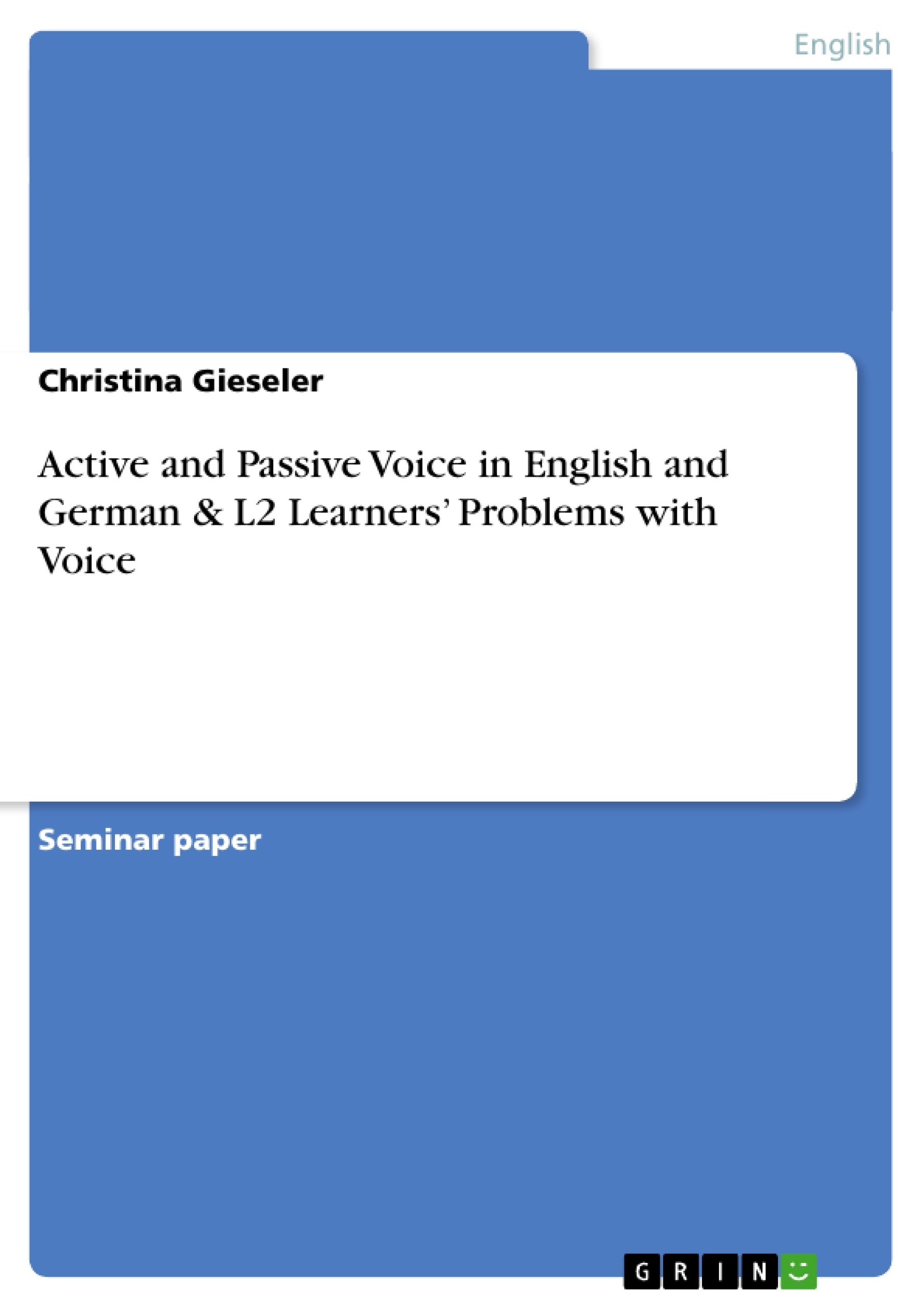In how far are active and passive voice in English and German different from each other? What difficulties do learners of English as a second language have to face when they deal with “voice”, especially in academic writing? This paper intends to answer these questions by firstly dealing with the descriptions and comparisons of active and passive voice, and partly also middle voice, as far as they are presented in Understanding English-German Contrasts by König & Gast. In a second step, certain exemplary problems that L21 learners of English come across when dealing with active and passive voice will be picked from Hinkel’s Teaching Academic ESL Writing: Practical Techniques in Vocabulary and Grammar. These problems will then be examined by referring back to the text by König & Gast.
Inhaltsverzeichnis (Table of Contents)
- Active and Passive Voice in English and German & L2 Learners' Problems with Voice
- Comparability of “Voice” in English and German
- Passive Formation in English
- Passive Formation in German
- L2 Learners' Problems with the Use of the Passive and its Importance for Academic Writing
Zielsetzung und Themenschwerpunkte (Objectives and Key Themes)
This paper aims to compare active and passive voice in English and German, highlighting the differences and challenges faced by learners of English as a second language (L2) when using voice, particularly in academic writing. The paper draws upon the work of König & Gast in "Understanding English-German Contrasts" and Hinkel's "Teaching Academic ESL Writing: Practical Techniques in Vocabulary and Grammar" to examine specific problems encountered by L2 learners.
- Contrasting active and passive voice in English and German
- Identifying challenges faced by L2 learners in using passive voice
- Exploring the importance of passive voice in academic writing
- Analyzing the semantic and stylistic differences between active and passive constructions
- Examining the impact of first language grammar on L2 learners' use of passive voice
Zusammenfassung der Kapitel (Chapter Summaries)
- The first chapter introduces the concept of "voice" and its various forms, including active, passive, and middle voice. It compares the structures of these voices in English and German, highlighting the differences in their morphology and frequency of use.
- The second chapter examines the comparability of active and passive voice in English and German. It identifies the grammatical changes involved in constructing a passive sentence from an active sentence, including the demotion of the subject, promotion of the object, and introduction of an auxiliary verb. The chapter also discusses the use of passive voice in scholarly texts and its application in cases where the agent is unknown or irrelevant.
- The third chapter focuses on passive formation in English, examining the different types of passive constructions possible with various verbs, including monotransitive, ditransitive, and phrasal verbs. It also discusses the semantic restrictions for the construction of the passive, including the requirement for a "true Patient" and the limitations on passivization of intransitive verbs.
- The fourth chapter delves into passive formation in German, highlighting the case-dependence of passive formation and the different auxiliary verbs used in various constructions. It explores the "Zustandspassiv," "bleiben-Passiv," and "Modalpassiv" and briefly mentions other passive forms.
- The fifth chapter explores the challenges faced by L2 learners in using passive voice in English, discussing the complexities of passive structures, the influence of first language grammar, and the difficulty in using passive voice appropriately in academic writing.
Schlüsselwörter (Keywords)
This paper focuses on the contrastive syntax of active and passive voice in English and German, highlighting the difficulties faced by L2 learners in using passive voice in academic writing. Key concepts explored include voice, diathesis, argument structure, thematic roles, grammatical functions, valency reduction, passive formation, unaccusative verbs, and stylistic differences between active and passive constructions. The paper also examines the impact of first language grammar on L2 learners' use of passive voice and the importance of using passive voice appropriately in academic discourse conventions.
- Citar trabajo
- Christina Gieseler (Autor), 2008, Active and Passive Voice in English and German & L2 Learners’ Problems with Voice, Múnich, GRIN Verlag, https://www.grin.com/document/148682




